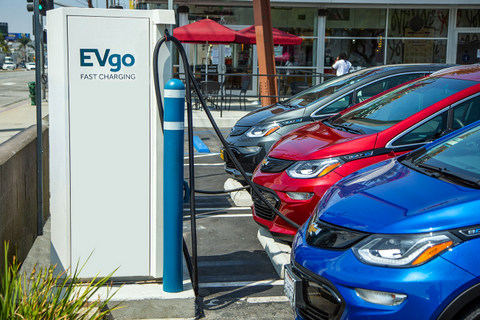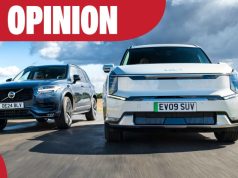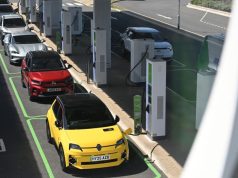A Changing Automotive Market Alters Everything
This article may contain affiliate links.
California has always been the state that pushes boundaries when it comes to cars. It is the birthplace of hot rods, freeways and, of course, Tesla. But in the last few years, California has set its sights on something much bigger. It aims to transition the entire state toward electric vehicles. By 2035, all new cars sold in the state will need to be zero-emission. That means electric cars, plug-in hybrids or hydrogen fuel cell vehicles.
This is a huge shift for everyone who drives in California. It is especially true when it comes to new drivers. If you are just studying for your California DMV practice test or thinking about what your first car might be, the state’s EV mandates are already shaping your future on the road. Let’s dig deeper together.
Why California Is Going All-In on EVs
The big reason behind the mandate is environmental. California has some of the worst air pollution in the country. Transportation is a major contributor to greenhouse gas emissions. The state is hoping to clean up the air and move toward its climate goals. That’s why they require that all new cars sold be zero-emission.
Automakers are already moving in this direction. GM, Ford, Hyundai and other big companies are rolling out more EVs every year. California is basically speeding it up and making sure its laws keep up with the technology. Sixteen other states also follow California’s ZEV mandate regulations, representing about 40% of the automotive market.
How This Affects New Drivers
Things are changing fast. The car you buy, the way you learn about cars and even the DMV test questions you face are all starting to shift toward an electric future.
1. Your First Car Might Be Electric
When our parents or older siblings got their first cars, they usually ended up in a cheap used gas-powered sedan. Think old Honda Civics, Toyota Corollas or maybe a beat-up Ford Focus. For today’s new drivers, the odds are higher your first car could be electric. This will be especially relevant after 2035, when new gas cars will no longer be for sale in California and many used EVs will be on the market from 25 years of EV sales. Even before then, EVs are trickling into the used market. This is where most teens and young adults buy their first ride.
2. Different Learning Curve
Driving an EV is not dramatically different from driving a gas car. However, there are some quirks. Instant torque can surprise new drivers. Regenerative braking, where the car slows down as soon as you lift your foot off the accelerator, also takes some getting used to. Of course, these things are not deal-breakers. However, they do change the learning curve when you are practicing for your license.
3. Costs and Choices
EVs can be more expensive upfront than used gas cars. However, they are cheaper to maintain. No oil changes, fewer moving parts and electricity is usually cheaper than gas. New drivers will have to balance these costs when picking a first car. Charging access is another factor. If you live in an apartment without a garage, owning an EV might be trickier.
What’s Changing on the DMV Permit Test
The California DMV updates its tests regularly. The EV shift is already influencing what new drivers need to know. If you are studying for your permit, here are some ways EVs are sneaking into your prep.
1. Questions About Fuel Efficiency and the Environment
You might see more questions that highlight California’s clean air laws, emissions or the benefits of zero-emission vehicles. Even though the test is mostly about rules of the road, the DMV often sprinkles in “big picture” questions to reflect state priorities.
2. Signs and Symbols
EV charging station symbols are popping up on freeway signs, parking lots and DMV manuals. Knowing what those mean could absolutely be a test question.
3. Driving Habits That Save Energy
The permit test has always included questions about eco-friendly driving. With EVs, these ideas expand into understanding regenerative braking or efficient driving styles that extend battery life. Future tests may also come with specific EV-related efficiency tips.
4. Emergency Situations
EVs bring a slightly different set of rules in emergencies. For example, fire departments treat EV fires differently than gas car fires because lithium-ion batteries behave in unique ways. You might not get a deep dive into that on the test. However, the DMV could introduce questions about EV safety basics.
The Cultural Shift for Teen Drivers
Driving has always been tied to freedom and identity for teens and new drivers. For decades, the image of rolling up to school in your car has been part of the American coming-of-age story. EVs are rewriting that narrative a bit.
For one, EVs are often techier. They come with huge touchscreens, built-in apps and futuristic features like “one-pedal driving.” For digital-native teens, this might feel natural. In fact, it might be more exciting to drive a car that feels like a giant smartphone on wheels.
On the flip side, some of the “classic” aspects of car culture are fading. No more filling up at a gas station with your friends. No more tinkering with engines in the driveway. EVs are harder to modify or fix at home. This changes the way young drivers connect with their cars.
Challenges Ahead
Of course, the transition is not perfect. New drivers are going to bump into some real challenges as EVs become a common thing:
Access to charging — Not every teen lives in a house with a garage. Apartment dwellers might struggle to charge daily. Public charging stations are expanding. However, they are not yet everywhere.
Cost of entry — Even with prices coming down, new EVs can still feel out of reach for families looking for budget-friendly first cars. Some remaining incentive can help new and used EV buyers.
Knowledge gap — Many driving schools still use gas cars. So, students may not get real EV practice until after they are licensed unless their parents have an EV. That can make the first few months of driving feel like an extra learning curve.
Let’s Wrap It Up
From the cars to learn on to the rules to be tested on to the way to experience driving freedom, it is all changing. For some, that is exciting. For others, it is intimidating. After all, you have to deal with the costs, charging logistics and the unfamiliar quirks of electric cars.
However, new drivers are usually the quickest to adapt. If you are just learning the ropes now, you will not have years of habits tied to gas cars. You will jump straight into the EV world and probably handle it better than most seasoned drivers.
The post How California’s EV Mandates Affect New Drivers and DMV Permit Tests first appeared on Clean Fleet Report.







